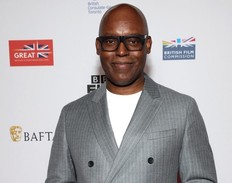Chronological vs. biological age: What really defines how old you are
Chronological and biological age can differ in immense ways, and science is uncovering ways to better understand it, and possibly help people age more healthily than ever before

Article content
Aging is an inevitable natural biological process, a gradual breakdown in how our bodies function over time. While not necessarily signs of illness, we begin to wear down: wrinkles, slower metabolism, and reduced bone density are commonplace as we grow older. Inflammation slowly increases, the immune system weakens and the body becomes more vulnerable to chronic diseases.
For decades, myths about aging have shaped how we think about it: that it’s purely genetic, that nothing can slow it down, or that aging must always come with decline. In reality, lifestyle, genetics, environment and emerging research all play a role, but so do the different types of age. Chronological and biological age can differ in immense ways, and science is uncovering ways to better understand it, and possibly help people age more healthily than ever before.
Recommended Videos
What is chronological age?
Chronological age is represented by your birthday. It is factual, but not body-evident. Can you guess someone’s age just by looking at them? If all bodies deteriorated over time in the exact same way, you’d probably be able to. Chronological age is used to measure life experience, maturity and more often than not, a rough estimate of when things should be happening. For example, teenagers experience puberty roughly between the ages of 8 and 14, and adults start noticing gray hairs between their mid-30s and their 50s. The reason for these broad estimates of when bodily functions begin, cease and transform is that every single human being on the planet has a unique biological age.
What is biological age?
This is the age that your body functions at physically, measured with fitness tests, examinations, doctors’ appointments and the like. One person may develop dementia long before the average age bracket, or another may have not had their last baby tooth fall out until they were 26. The importance of differentiating chronological from biological age is that no person can be measured exactly to the standard of the entire population, which makes personalized healthcare necessary. If every person aged and changed physiologically at the same rate, there wouldn’t be a discrepancy. But that isn’t how our bodies work.
Can you change your biological age?
There are multiple reasons why the two ages can be different. Genetics and environment contribute to one’s biological age; you may be more at risk for illnesses that show much later in life due to hereditary traits or poor living conditions.
Stress and mental health are critical to maintaining a young biological age. Have you ever heard of hair going white or gray following a traumatic event or stressful situation? Stressful occupations and exposure to chronic stress can also increase inflammation, contributing to early aging, according to the National Library of Medicine (NLM).
However, the most likely difference in age is due to lifestyle factors. Nutritional intake, exercise and sleep habits all affect your biological age in positive and negative ways. Changing these factors is the most effective way of improving your biological age.
Nutrition
Diets rich in antioxidants (plenty of fruits, vegetables and seeds) slow the deterioration of cells, while diets that are high in refined sugar and trans fats (processed and fast food) contribute to inflammation. In general, lower inflammation helps slow biological age, so keeping a healthy cholesterol intake and low blood pressure support cell health. Eating vegetables makes you big and strong, but it also keeps you young and well!
Physical activity
Functional fitness and keeping an active daily lifestyle aren’t just for the young; even those in their late 60s and 70s can be consistent in the gym. Vitality is key to reducing one’s biological age, and strength is a big part of that. Exercise produces energy and reduces inflammation, as well as preserving muscle mass and bone density, which naturally decline with age.
Sleep habits
Sleeping is your time to recharge. During sleep, the body performs critical DNA repair and cell regeneration. Insufficient sleep disrupts these processes, leading to faster cellular wear and tear and an accelerated biological age. Sleep also regulates hormones like cortisol (a stress hormone), and reducing stress is a key factor in reducing biological age.
According to a 2025 study from Mayo Clinic, adults require at least seven hours of healthy sleep, and teenagers require eight to ten. Sleep is an important factor in allowing the body to grow and regulate at younger ages, where growth is critical.
Reversal and slowing biological age
There are two hypothetical ways to change your biological age: slowing down and reversal. Slowing down one’s biological age means adopting a healthy lifestyle, including habits such as a healthy diet and regular physical activity. An individual living healthily will show on paper like a 50-year-old who, in their blood work and cell health, resembles a 40-year-old.
Reversal is a much more complex subject, and one that is still under heavy scientific scrutiny. In 2023, NLM published a case study involving six women who, after completing an eight-week methylation-supportive diet (emphasizing nutrient-rich foods high in B vitamins, zinc and magnesium) and lifestyle program, were reported to have an average decrease of 4.6 years off their biological age. The program included diet, sleep, exercise and relaxation guidance, supplemental probiotics and phytonutrients and nutritional coaching, the key factors influencing biological age.
Anti-aging ‘solutions’
There are many unproven ‘solutions’ to decreasing biological age that have been discussed throughout history. In the 16th century, Mary Queen of Scots was said to bathe in white wine, which was thought to improve complexion based on its antiseptic alcohol content. In 1995, the FDA approved tretinoic acid, the main ingredient in Retin-A cream, to treat wrinkles, which caused further inflammation and skin blemishes like redness and peeling, and is now only prescribed in cases of acne.
However, the future of anti-aging research has shifted its focus from temporary fixes for appearance to targeting aging at its biological roots, driven by advancements in biotechnology.
In gene therapy, researchers are experimenting with ways to reset aging cells by tweaking key genes, called Yamanaka factors. When this set of factors, first identified by Nobel prize winner Shinya Yamanaka in 2006, are introduced to adult cells, they can re-program them to a more ‘youthful’ condition.
In 2023, David Sinclair’s Harvard research team found that an application of Yamanaka factors to a control group of mice reversed aging, improving their vision and organ functioning, but human testing is still incredibly experimental. There is a risk of cancerous tumour formation, and ethical questions arise: even if gene therapy becomes safe, it may be expensive or limited to private clinics, heavily limiting accessibility.
Aging is a natural process of life, and while time can’t be stopped, we are learning more than ever about the biological processes that make us feel older than we are.
With research continuing to evolve, the science of aging becomes clearer day by day. Our bodies are machines that work at their own pace, and by making healthy lifestyle choices, we can respect that pace in a proven, risk-free way.
-
 Canada’s aging population: Shifting the narrative and embracing the silver economy
Canada’s aging population: Shifting the narrative and embracing the silver economy -
 Advance care planning: Who is going to take care of you if something happens?
Advance care planning: Who is going to take care of you if something happens? -
 Changing your future: New research identifies 17 modifiable risk factors associated with stroke, dementia and depression
Changing your future: New research identifies 17 modifiable risk factors associated with stroke, dementia and depression -
 The evolution of self-care: How to take care of yourself now and as you age
The evolution of self-care: How to take care of yourself now and as you age














